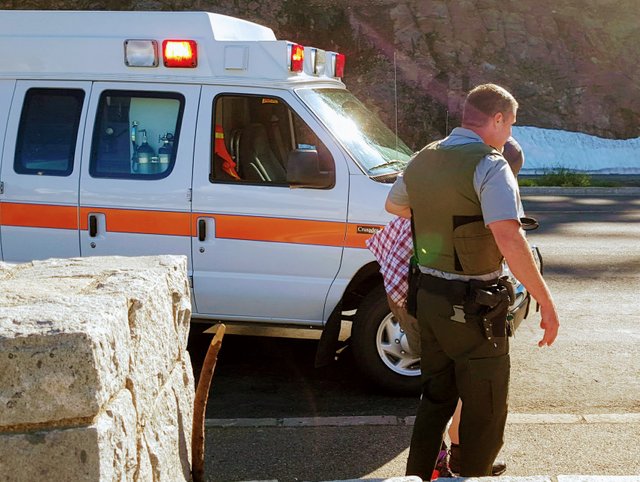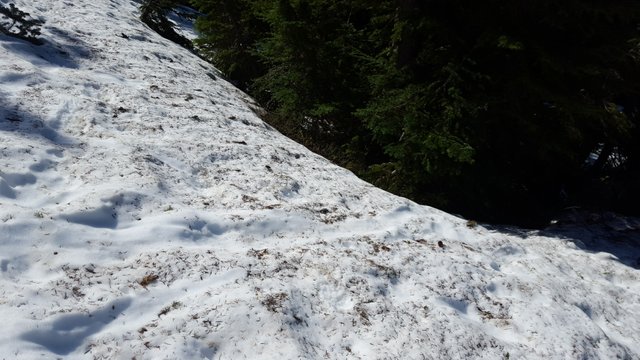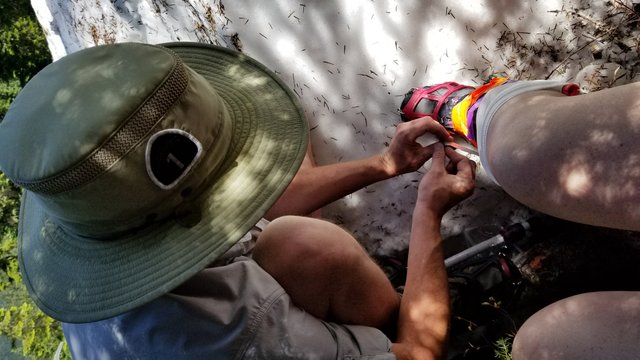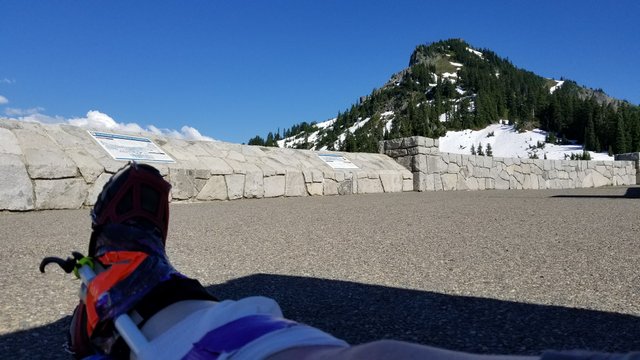Emergency First Responder is You.

Accidents happen, so let's be ready for them. In this post we'll look at situational assessment and ways to avoid making an emergent situation worse for a victim and first responders. Then in tomorrow's post we'll evaluate two med-kits: One for the car and one for the backpack.

A few situations I've encountered that were a big surprise:
-Driving down the highway, there's a car pulled over--on fire with flames pouring from the hood--burning dangerously close to oak trees and brush along the road.
-Hiking on a steep snowy slope in Washington's Northern Cascades, turn around and my partner has disappeared. You can see the track in the second photo that she left when she slipped and fell into a tree well. A broken ankle and 1 mile hike later, we were happy to make it back to the scenic overlook. We used her hiking poles and duct tape to make a splint.




-Hiking with a 9 year old, I fell and badly sprained an ankle, five miles from the car.
-At work, a co-worker was blasted in the eyes by debris from a shattering saw blade.
And I could keep going with other stories, and so could you. Let's take a quick look at situational assessment.

Thing to remember: Say it: "One, two, three, four, five...A, B, C, D, E"
This will help you avoid making mistakes when providing first responder care.
Look out for Number One (You). Is the scene safe to approach? Is there rockfall, fire, traffic?
What's wrong with you (The victim)? Does it look like they fell? Impact at high speed? Breathing? Initial visual assessment of victim.
No germs on me. You'll have nitrile gloves in your medkit because you're smart. Don any glasses, bandana, any items to isolate the victim's body substances from yourself. Rainjacket, etc.
Any more? Are there any more victims lying around?
Dead or alive? Do they appear dead or alive?
Now we move to A, B, C, D, and E.
A: Airway. We are trying to establish that there is an open airway to allow victim breathing. Are they breathing? If not, this is your first priority.
B: Breathing. If victim is not breathing, tilt their head back and search their mouth and throat with your finger for obstructions. Perform two rescue-breaths and begin chest compressions (CPR). If they begin to throw up, tilt them onto their side to prevent choking.
C: Circulation. Do they have a pulse? Check for pulse at the wrist or neck. If they're cold, it may be hard to find. Begin CPR if needed. Loosen constricted clothing or gear.
D: Disability. What is broken? Make a mental list of apparent disabilities and check the victim thoroughly for any injuries that may have been missed. Ask questions if the victim is conscious. Are they on any medications? Do they remember what happened just before the accident? Do they know what day it is? (Note: Hippies may not recall the day, month or even year. This is normal. Ask them instead how "stoked" they are about a given idea. If they are not stoked enough to take action, encourage them by saying "Bro" in an appealing tone.) If the scene is safe, this is where you can do a full patient assessment. Direct bystanders to take copious, detailed notes and secure the scene.
E. Environment/Evacuation. Once the victim is stable enough for transport--or if a dangerous environment demands haste--you'll need to develop and implement an evacuation plan. Should we camp here for the night? How long until the paramedics arrive, or do we have to walk out?
It's always going to be a surprise when tragedy strikes, and you'll always have to improvise something to succeed. Help your injured buddy to feel better but don't lie to them about circumstances. Even seemingly unconscious people are sometimes able to hear things, so be careful what you say around victims.
This is meant to be a quick introduction for first aid and by no means a comprehensive guide for medical treatment. Look for a class near you to take. NOLS has a great Wilderness First Responder course for those in the USA. Feedback and comments are welcome.
Tomorrow we'll look at various first-aid kits and more strategies for dealing effectively with emergencies.

Go here https://steemit.com/@a-a-a to get your post resteemed to over 72,000 followers.